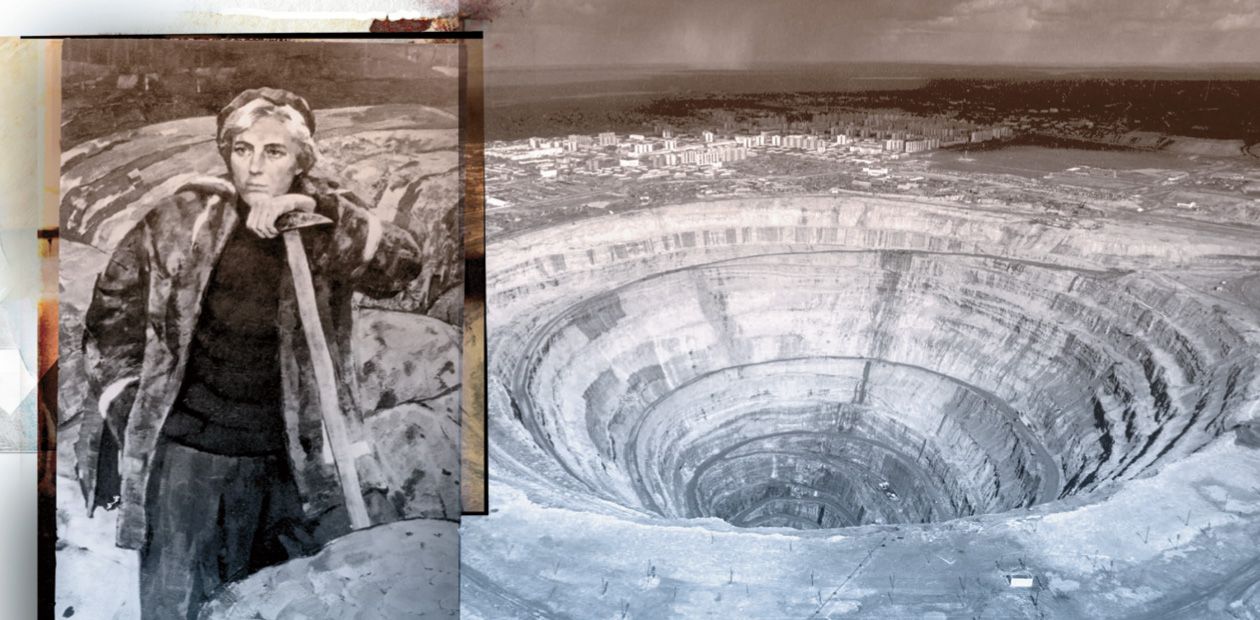The Discovery of Zarnitsa: The Dawn of Siberian Diamonds
Although the first Russian diamonds were found as early as one and a half century ago, the history of the Russian diamond industry started in the mid-20th century with the discovery of rich primary kimberlite deposits in Yakutia.
The first kimberlite pipe in Russia was discovered by the geologist Larisa Popugaeva in 1954. Its name, Zarnitsa (literally “heat lightning”) proved to be a fortunate omen. It was followed by dozens of kimberlite bodies, many of them diamondiferous.
The geologist Edward Erlich introduces readers to the history of the discovery of Yakutian kimberlite pipes. He has written popular science publications and a book on the history of famous deposits. He is one of the discoverers of the Tomtor rare metal deposit. In the late 1950s, he took part in prospect evaluation works in northwestern Yakutia. His Candidate (PhD) thesis was dedicated to the structural control of Yakutian kimberlites
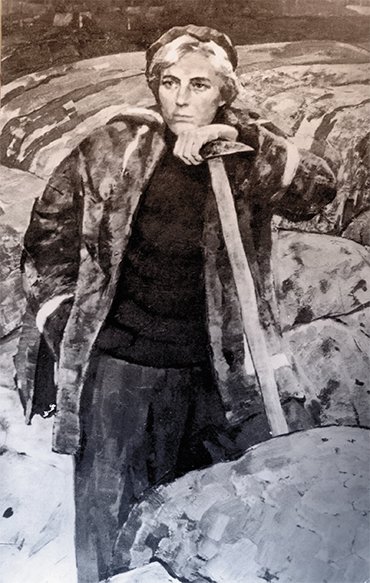 Targeted search for diamonds commenced in the USSR in 1938. The researcher of the Geological Institute A.P. Burov wrote a memo recommending a series of studies on the comparison of the geology of diamondiferous regions in the world with the geology of particular regions in the USSR. Participating in these studies was Vladimir Sobolev, a young geologist who was the first to provide a lithological description of Siberian vast trapp basalts. In 1941, he presented a report to the Geological Committee and emphasized the similarity between the geologic structures of the Kalahari and Siberian Cratons. However, Sobolev himself never declared that he had predicted the diamond potential of the region, at least, until 1957.
Targeted search for diamonds commenced in the USSR in 1938. The researcher of the Geological Institute A.P. Burov wrote a memo recommending a series of studies on the comparison of the geology of diamondiferous regions in the world with the geology of particular regions in the USSR. Participating in these studies was Vladimir Sobolev, a young geologist who was the first to provide a lithological description of Siberian vast trapp basalts. In 1941, he presented a report to the Geological Committee and emphasized the similarity between the geologic structures of the Kalahari and Siberian Cratons. However, Sobolev himself never declared that he had predicted the diamond potential of the region, at least, until 1957.
Earlier, in 1929, N.N.Urvantsev, a prominent Arctic researcher, found a specimen of melilite basalt associated with kimberlites. It was later described by G.G. Moor. In 1937—1941, Moor published several papers describing the rare ultramafic–alkaliс rocks found in northern Siberia. In these papers, the word kimberlite was used for the first time in the Russian press. Also Moor was the first to indicate that the northern Siberian Craton might be diamondiferous. At the International Geological Congress held in Moscow in 1937, Moor focused his attention on the similarity between the geologic settings in the Kalahari and Siberian Cratons. These data were used by Sobolev in his reports submitted to the State Planning Committee in 1941 *.
The diamond geologists working in Siberia had long been influenced by the concept of association of diamond deposits with igneous associations of the Ural type. The reports presented in 1948—1952 by the geologists of the Amakinsky Expedition, including its leading expert in diamonds G. Fainshtein, were based on the conjectured association of diamonds with basaltic (trapp) minerals. The largest finding on Sokolinaya Kosa (in Russian, Falcon Spit) on the Vilyui River was associated with ilmenite and pyroxene, that is, typical trapp minerals. As a result, chromite and native platinum present in rock samples were considered the main diamond indicators.
The long controversy about various models of primary diamond deposits was decisive for choosing prospecting methods. The most important step in the development of approaches to prospecting was the recogntition of the fact that kimberlite pipes should be considered potential sources of diamonds. It followed from this notion that the main prospecting guide was the presence of a certain mineral assemblage in black sands samples, in particular, pyrope. Pyropes, associated with diamondiferous kimberlites, are present in a continuous series of minerals: from iron garnets (almandines), associated mainly with metamorphic rocks, to kimberlitic magnesian garnets, pyropes. The red thread of pyrope grains in black-sands samples led the scientists directly to the destination.
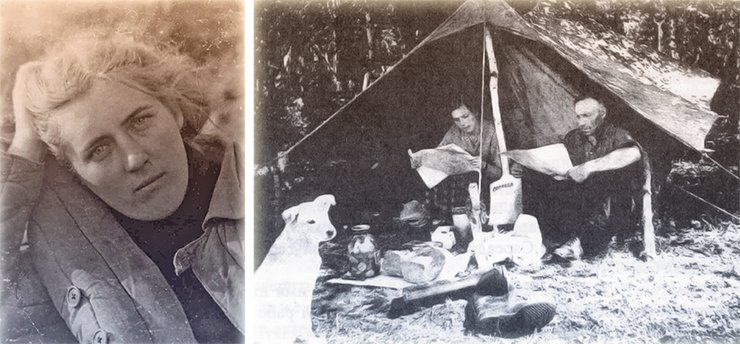
The so-called pyrope method of kimberlite search made it possible to discover diamond deposits in Siberia. The credit for its adaptation to Siberian conditions and practical implementation is due to the mineralogists of the Central Expedition of the All-Russia Research Geological Institute (VSEGEI), headed by N. Sarsadskikh. She defended it in a long-term struggle with the partisans of associating diamonds with basaltic (trapp) minerals. As soon as Amakinsky recognized this method, pipe discovery became a matter of technique: as many as ten pipes were found during one field season.
Speaking about Siberian diamonds, we cannot fail to mention Larisa Popugaeva. It was she who discovered the first kimberlite pipe in Russia, named Zarnitsa. After graduation from Leningrad University in 1950, she was employed by the Central Expedition of VSEGEI. For me, like for many others, she was just a name from a legend. Therefore, I had to refer to the recollections of Inna Gorina, a diamond expert who worked at the Research Institute of Arctic Geology and knew Larisa well in her student days and later, in the decisive 1954, when the first pipe was discovered.
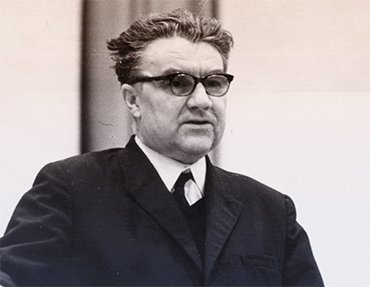 Fate always promotes token characters at moments of history. Undoubtedly, Larisa was the one. Beautiful and lovely, reminding all movie stars of the time, cherubic and gracile, she pretended to be rough and spoke with a cigary voice. She was romantic, purposeful, extremely laborious, and persistent. She was the best student. The repeatedly pronounced criticism by N. Sarsadskikh that Larisa could not even hold a compass course sounds strange, to say the least. Larisa’s father was executed in 1937 – yet another token.
Fate always promotes token characters at moments of history. Undoubtedly, Larisa was the one. Beautiful and lovely, reminding all movie stars of the time, cherubic and gracile, she pretended to be rough and spoke with a cigary voice. She was romantic, purposeful, extremely laborious, and persistent. She was the best student. The repeatedly pronounced criticism by N. Sarsadskikh that Larisa could not even hold a compass course sounds strange, to say the least. Larisa’s father was executed in 1937 – yet another token.
The pyrope-based prospecting method was employed by most crews of the Amakinsky Expedition in the field season of 1954. It was also planned to be used by the VSEGEI team detached to trace the sources of minerals found in the stream sediment samples in 1953. The rest was a matter of technique.
Larisa Popugaeva and her assistant Fedor Belikov went to the field and started sediment sampling in the Daldyn River and its tributaries. They recorded the distribution of diamond index minerals in the samples taken along streams until the minerals disappeared. Then they took samples on a slope and found sedentary, that is, practically unmoved outcrops of weathered kimberlites. It was the first kimberlite pipe discovered in Siberia.
By saying that pipe search had become a matter of technique by the time Larisa Popugaeva’s crew went to the field, I do not intend to diminish the difficulty or importance of this find. What I mean is that the method of search and the tentative region of its location had been determined. The rest was what laypeople picture to themselves as the so-called romanticism of geological work: traverses across taiga, sampling, sample examination, and, most importantly, the decision as to where to leave a stream for a slope. An accurate description of this work was given by Fedor Belikov: “We spent the next day on the hill, and on the following day we came to a small low-lying ground overgrown with not tall and sparse larches. In the afternoon it began raining. We had a canvas to cover ourselves. To get warm, I decided to make a fire and heat a large stone, so that it could serve as a stove. I built a fire and called Nelya [Larisa] to get warm on the stone under the canvas. She sat down and suddenly sprang up, grabbing a lens: “Look, Fedyunya, blue clay, all in pyropes!”
EDITORIAL“However, notable progress was made when the old traditional approach was used: recognition of typical associates, kimberlitic garnets. The garnet path led geologists (N.N. Sarsadskikh and L.A. Popugaeva) to the first Yakutian pipe, which was given the poetic name Zarnitsa. As it frequently happens, the first pipe triggered the discovery of many others. In the autumn of 1954, N.V. Kind closely approached the Mir pipe, the first sample of which was delivered by Yu.I. Khabardin next summer. In the Daldyn region, V.N. Shchukin discovered the Udachnaya pipe” (V.S. Sobolev, op. cit., P.9)
Interestingly, Popugaeva herself did not believe at first that the site was a diamond deposit. The note she wrote on the spot told about the “remains of a very rich ilmenite–pyrope and, probably, diamond deposit.” It was not certain that diamonds were present among minerals in the samples taken there. Larisa decided to take the samples for an X- ray to the nearest base of the Yaralinsky Expedition of the Research Institute of Arctic Geology.
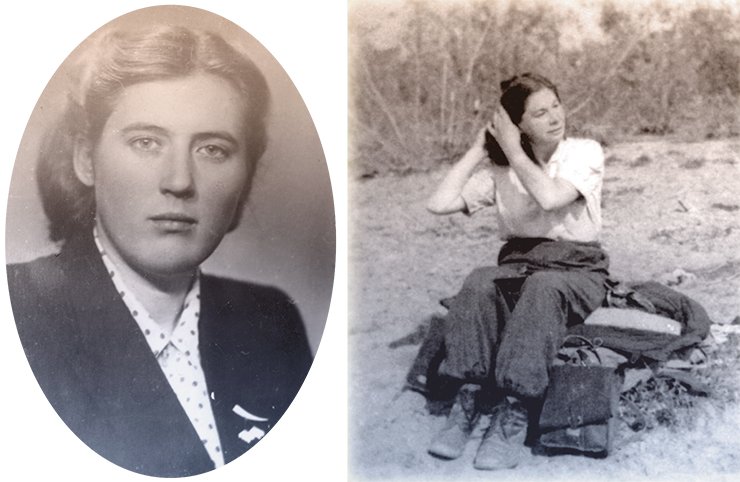
Inna Fedorovna Gorina recollects, “Our meeting in Yaralinsky base was warm. We had so much in common: the university; the chair; the number one teacher, Kukharenko, and the diamond work taught by Aleksandr Aleksandrovich. I don’t think though that Larisa felt triumphant. She was unsure, and it was important for her to confirm the presence of diamond on our X-ray device.” Larisa paid a high price for this visit.
EDITORIAL 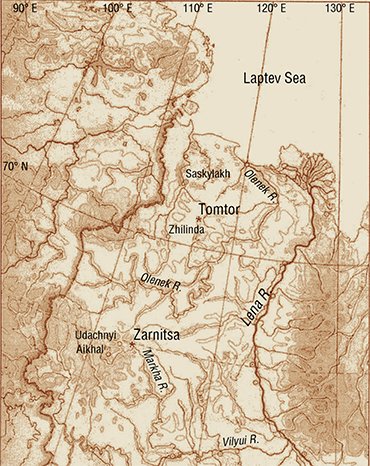 The finding was extremely important. It led to the discovery of all primary diamond deposits of Siberia. The most accurate assessment of the event was provided by M. Gnevushev, head of the Diamond Laboratory. He proposed that the pipe be named Zarnitsa, which means “remote summer lightning” in Russian. Indeed, the discovery of this pipe lightened the discovery of the diamond-rich pipes Mir, Aikhal, Udachnaya, Sytykanskaya, etc., upon which the glory of the Russian diamond industry rests. Only the later tests of 1955—1958 and 1977—1982 revealed the commercial diamond potential of Zarnitsa itself, and in 1983 it was recognized as a commercial deposit. Zarnitsa became one of many poorly diamondiferous pipes constituting the diamond reserve of Russia. Its development started as late as in 2000.
The finding was extremely important. It led to the discovery of all primary diamond deposits of Siberia. The most accurate assessment of the event was provided by M. Gnevushev, head of the Diamond Laboratory. He proposed that the pipe be named Zarnitsa, which means “remote summer lightning” in Russian. Indeed, the discovery of this pipe lightened the discovery of the diamond-rich pipes Mir, Aikhal, Udachnaya, Sytykanskaya, etc., upon which the glory of the Russian diamond industry rests. Only the later tests of 1955—1958 and 1977—1982 revealed the commercial diamond potential of Zarnitsa itself, and in 1983 it was recognized as a commercial deposit. Zarnitsa became one of many poorly diamondiferous pipes constituting the diamond reserve of Russia. Its development started as late as in 2000.
The recognition of kimberlite pipes as the main source of diamonds in Siberia, approval of their search based on index minerals, and discovery of Zarnitsa made the search for pipes routine. Indeed, when the Research Institute of Arctic Geology decided to return urgently to the region of the outcrop of tuffs found by Zaburdin and identified by V. Cherepanov as kimberlites, it became common for a team conducting geological survey in the middle part of the Olenek River basin to find three to five kimberlite pipes annually. Most of them contained few diamonds, but it was a matter of luck. It is known that only up to ten kimberlite pipes of a hundred contain commercial amounts of diamonds. The conventionalism of the search leading to future discoveries did not reduce the difficulties but the difficulties were merely technical. The foundation for the discovery had been laid.
Another group of dramatis personae appreciated the significance of the discovery. They were officials of the Amakinka Expedition. Having a keen antennae, these experienced bureaucrats understood the significance of the forthcoming event when Popugaeva and Belikov took samples from the Shestopalovka, a hitherto unknown stream called, after the name of the head of the Central Expedition (now the Dyakha Stream).
In 1986, I wrote basing on the stories I was told that managers of the Amakinka Expedition had extorted an application for a job in Amakinsky from Larisa Popugaeva dated by May of the same year, that is, BEFORE the discovery. At that time, I did not know about R. Yuzmukhametov’s article “Theft of the Century,” published in Mirninskii Rabochii in 1992. Later, Yuzmukhametov wrote a small book entitled The Moment of Glory and Tragedy of Larisa Popugaeva, where this purely criminal story was supported by documents.
Unlike her father back in 1937, Popugaeva was not imprisoned or threatened to be shot. Other times, other manners. They simply squeezed her to apply for a job at the Amakinsky Expedition in order to grab credit for her discovery. They reminded of her purged father and tried to charge her of diamond smuggling. Popugaeva’s head N. Sarsadskikh lost herself in conjectures. Later she wrote, “Time passed by, the deadline for the report approached, and I began to write letters to Nyurba and Moscow, up to the Central Committee of Communist Party that the employee and field data should be returned.” Needless to say, there was no reply. The person was lost, and so were the materials.
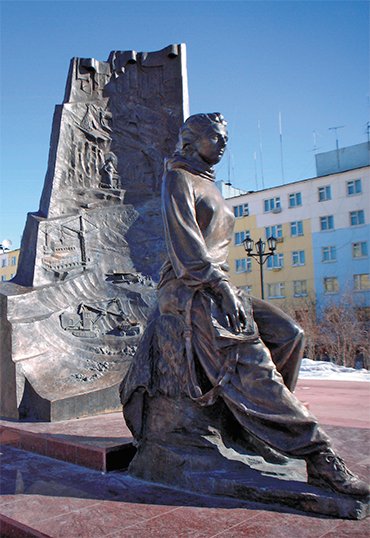 I hate to describe in detail this exquisitely planned bureaucratic campaign and moral tortures experienced by the discoverer. At present, a lot is said about prison camps, but the atmosphere in common offices of that time is cast a veil over. Larisa resisted for six weeks but eventually subscribed the application dated by the beginning of the field season. The goal was reached. Larisa was released to Leningrad and the collection of samples was returned to her.
I hate to describe in detail this exquisitely planned bureaucratic campaign and moral tortures experienced by the discoverer. At present, a lot is said about prison camps, but the atmosphere in common offices of that time is cast a veil over. Larisa resisted for six weeks but eventually subscribed the application dated by the beginning of the field season. The goal was reached. Larisa was released to Leningrad and the collection of samples was returned to her.
However, the traces of the history of this discovery were wiped out in accordance with the spirit of all crimes. This is the only explanation for the relocation of the witness post installed by Popugaeva and Belikov on the Zarnitsa pipe (only by 200 m, but the place is wrong). And the striking vindictiveness of M. N. Bondarenko with regard to the discoverers of Siberian diamonds. In 1955, Sarsadskikh had no access to the reports deposited in the Amakinka archive. When Sarsadskikh, together with the prominent Uralian diamond expert V. S. Trofimov was about to go to Daldyn, a telegram was sent ahead of their trip: “Sarsadskikh has flown out without permission, do not let her to the deposit.” Short and categorical. The monument in Mirny, which lists all the researchers participating in diamond search in 1957, bears no names of Leningrad geologists.
Several years later, the Yakutian regional Communist Party Committee issued a decree according to which M. Bondarenko, who spearheaded the whole story, was dismissed for numerous transgressions. The Zarnitsa story left marks on all characters. The management of the Amakinka Expedition secured the discovery of Siberian diamond deposits to themselves, so they did not need Larisa Popugaeva any more. Witnesses are always undesirable, and she was allowed to return to the Central Expedition of VSEGEI, where there was no room for her, a “traitor.”
Surely, there may have been excessive acts typical of a certain person. The plot may have been different if the Amakinka management had been different. Being a relative of the then Minister of Geology P.Ya. Antropov, Bondarenko relied upon his protection and was certain of his own impunity. Maybe, he had a natural predilection for arrogation. Yuzmukhametov mentioned several scandals related to his previous work in Warsaw and Moscow.
Larisa was denied employment at the VSEGEI. Since her return, the conflict became personal, typical of Soviet research institutes. Natalia Sarsadskikh charged Popugaeva with treason of the VSRGEI team and stated that the latter had changed the place of employment in order to take away the glory of the discovery from the Central Expedition. Larisa’s explanations to the effect that she had been forced to write the application to Amakinka expedition were in vain. Sarsadskikh persisted. As recently as in 2003, she said, “I would not have yielded!” Regrettably, she was still sure that she personally and the whole Central Expedition had been betrayed. As Natalia Sarsadskikh recalled, when Larisa applied for a job again, the head of the VSEGEI Goncharov called Natalia Sarsadskikh and informed her about it. Sarsadskikh replied, “You want to employ Popugaeva? You are free to do it. But then I will have to resign.” So he did not hire Popugaeva.
Larisa was employed by a jewelry industry enterprise. There, this creative person accomplished many deeds of high resolve, but it was all over with geology. Finally, in 1970 (sic!), Popugaeva defended her thesis on the search for kimberlites in the Siberian Craton.
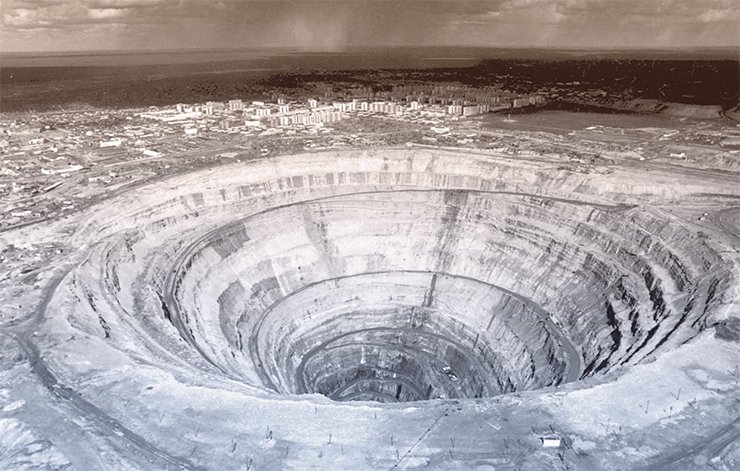
Natalia Sarsadskikh also won the recognition. According to her own story, “After journalists’ reports, Tatyana Vecherina, Director of the Museum of Diamond Industry Development in Yakutia, came to Leningrad. She had a talk with me and then applied to the Ministry for certifying me as the discoverer. The response was positive: ‘History should be retrieved.’” Probably, the ministry changed its attitude so easily because it had long been headed by another minister.
The location post was restored in 1994, by the 40th anniversary of the discovery, and the text of the note left by Popugaeva and Belikov on August 21, 1954, was reproduced on the screen nailed to the post.
In July 2004, in commemoration of the 50th anniversary of Zarnitsa discovery, a memorial to Larisa Popugaeva was unveiled on the central square of Udachnyi Town by the President of Sakha Republic N.A. Shtyrov, Larisa’s daughter N.V. Popugaeva, and N.N. Sarsadskikh.
This article has been written based of the article published in Zvezda (E. N. Erlich, To Discover a Deposit // Zvezda. 2006. No. 12. P. 69–88) and the book by Erlich E. N. “Mineral Deposits and History” // St. Petersburg. Polytechnical State University. 2006.
* V.S.Sobolev and G.G. Moor (On Siberian Kimberlites // Collection of Mineralogical Articles, L’vov Geological Society, L’vov, 1957, No. 11) stated that the idea of the diamond potential of the northern Siberian Craton had been put forward by V.S.Sobolev, but he did not publish it, and Moor mentioned it in his publications of 1940—1941


